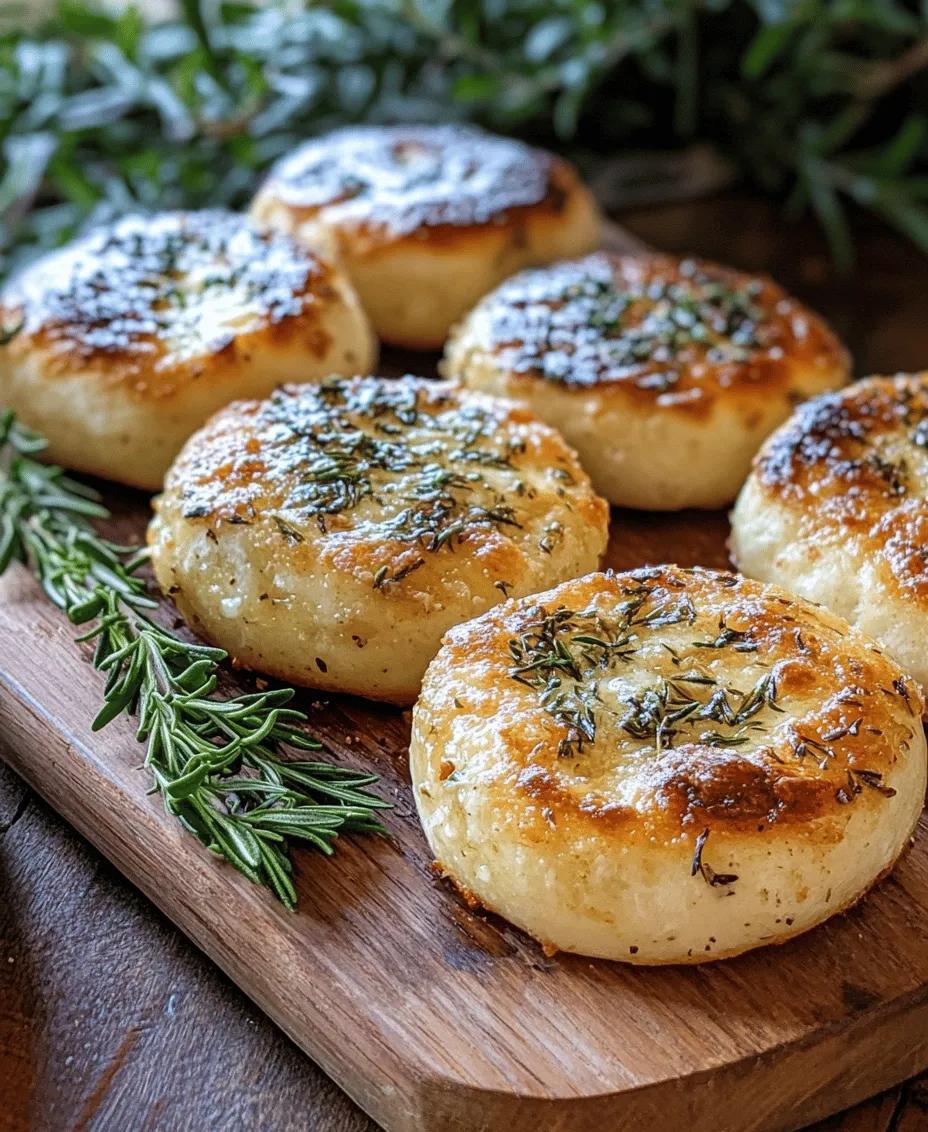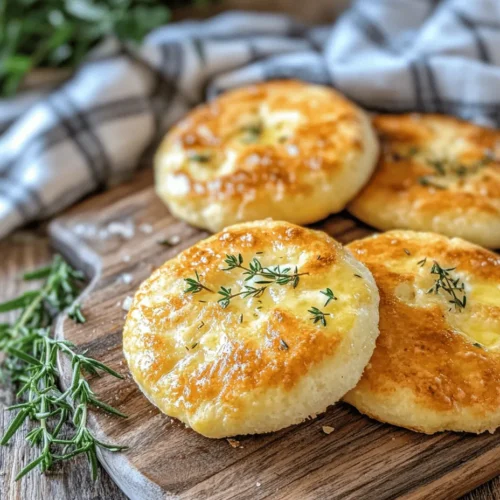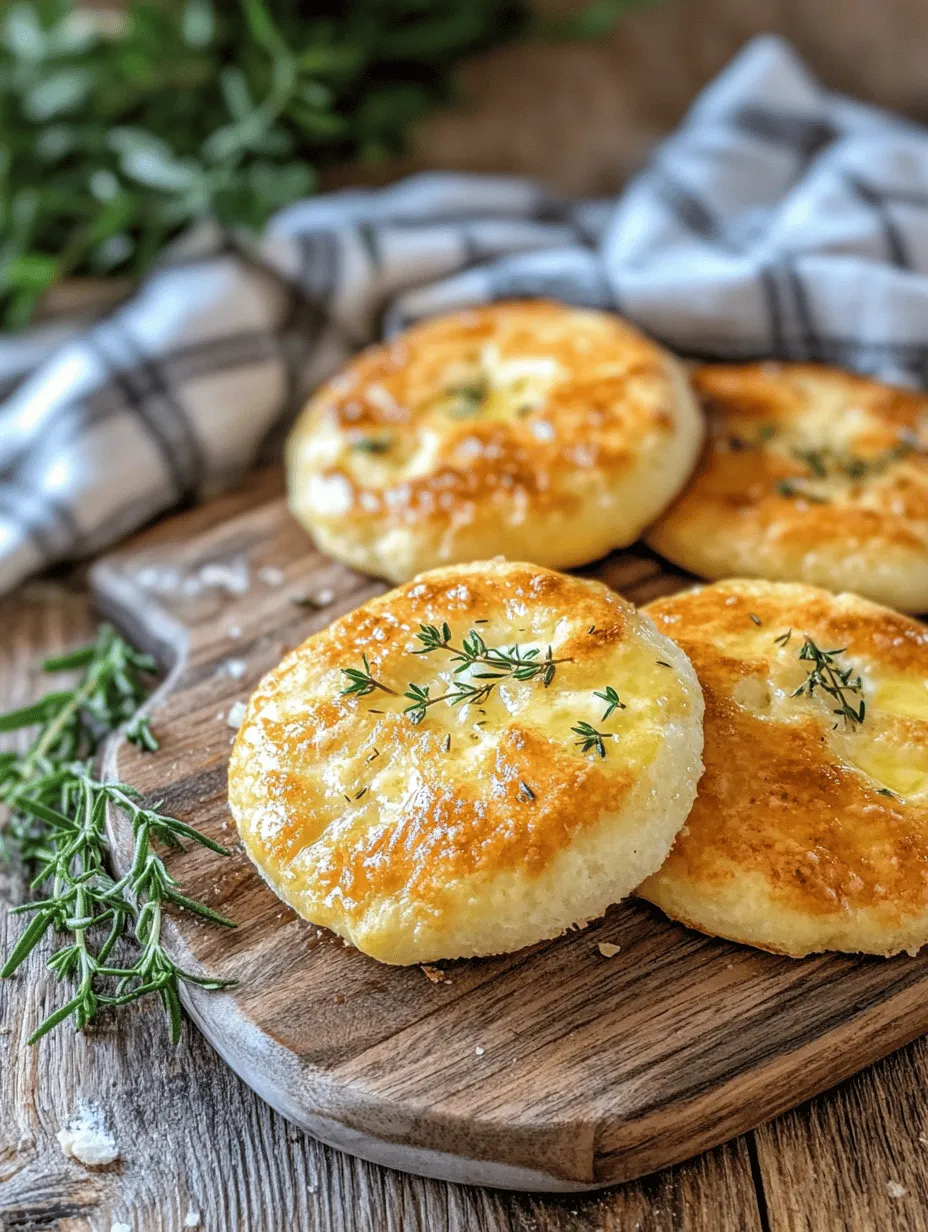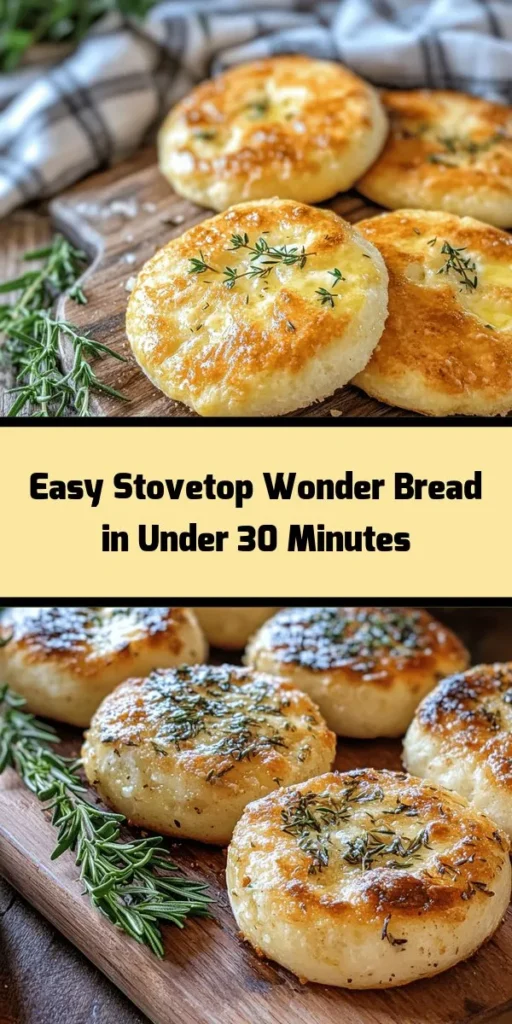In today’s fast-paced world, finding easy and delicious recipes that don’t require a lengthy baking process can be a challenge. Enter Stovetop Wonder Bread, a versatile and quick bread recipe that is perfect for any occasion. Whether you’re a busy parent, a college student, or just someone who loves fresh bread without the hassle of an oven, this recipe is for you. With simple ingredients and straightforward instructions, you’ll be able to whip up warm, fluffy bread in no time.
Imagine the aroma of freshly baked bread wafting through your kitchen, even if you don’t have an oven at your disposal. The Stovetop Wonder Bread allows you to create that delightful experience without the need to wait for the oven to preheat or endure long baking times. This recipe is a game-changer for those who appreciate the taste of homemade bread but find traditional methods time-consuming or inconvenient. Let’s dive into the details of this delightful recipe and explore how you can make the perfect Stovetop Wonder Bread.
Understanding the Basics of Stovetop Bread
Exploring the Concept of Stovetop Cooking for Bread
Stovetop bread-making is an innovative approach that brings together the joy of baking with the convenience of stovetop cooking. This method typically involves cooking the bread in a skillet or saucepan instead of an oven, allowing for quick and efficient preparation. The stovetop method is not only faster but also often results in a crusty exterior with a soft interior, mimicking the qualities of oven-baked bread.
Benefits of Making Bread on the Stovetop vs. Traditional Baking Methods
The advantages of stovetop bread-making are numerous. First and foremost, it significantly reduces the time required to produce freshly baked bread. Traditional baking methods can take an hour or more, factoring in preparation, proofing, and baking times. In contrast, Stovetop Wonder Bread can be ready in less than 30 minutes, making it an ideal choice for those in a hurry.
Additionally, stovetop cooking can be more energy-efficient. Using a stovetop instead of an oven helps to conserve energy, especially during hot summer months when you may not want to heat up your kitchen unnecessarily. Moreover, stovetop bread allows for greater control over the cooking process. You can adjust the heat quickly to achieve the perfect golden brown crust without the risk of overbaking.
The Appeal of Quick and Simple Bread Recipes for Home Cooks
Quick and simple bread recipes have become increasingly popular among home cooks who seek satisfaction from making bread without the associated complexities. Stovetop Wonder Bread fits this bill perfectly. It caters to those who might be intimidated by traditional bread-making techniques, such as kneading and proofing, by simplifying the process into manageable steps. This accessibility encourages even novice bakers to give bread-making a try, fostering a sense of accomplishment and creativity in the kitchen.
Ingredients Breakdown
To make Stovetop Wonder Bread, you’ll need a few essential ingredients. Understanding their roles will help you appreciate the recipe even more.
All-Purpose Flour: Importance and Alternatives
All-purpose flour is the backbone of this bread recipe. It provides structure and texture, allowing the bread to rise and maintain its shape. For the best results, opt for unbleached all-purpose flour, which tends to have a higher protein content than bleached varieties. If you’re looking for alternatives, whole wheat flour can be used for a denser loaf, or gluten-free flour blends can be substituted for a gluten-free version. Keep in mind that adjustments to hydration may be necessary when using alternative flours.
Baking Powder: Role in Bread-Making
Baking powder is a crucial ingredient that acts as a leavening agent in this recipe. Unlike yeast, which requires time to ferment and rise, baking powder works quickly to produce carbon dioxide gas when mixed with wet ingredients. This helps the bread to rise as it cooks, resulting in a light and fluffy texture. It’s essential to use fresh baking powder to ensure optimal results; expired baking powder may not provide adequate leavening.
Salt: Enhancing Flavor
Salt is more than just a seasoning; it plays a vital role in enhancing the overall flavor of the bread. It also strengthens the gluten structure and helps to regulate yeast activity in yeast-leavened breads. In this stovetop version, it contributes to the taste and balances the sweetness of other ingredients. Use fine sea salt for even distribution throughout the dough.
Sugar: Balancing the Taste
Sugar is another ingredient that helps balance the flavors in Stovetop Wonder Bread. While it adds a hint of sweetness, it also plays a role in browning the crust as the bread cooks. If you prefer a less sweet bread, you can reduce the sugar content or replace it with natural sweeteners like honey or maple syrup, keeping in mind that this may affect the moisture levels in the dough.
Milk: Dairy vs. Plant-Based Options
Milk adds moisture and richness to the bread, contributing to its tender crumb. You can use whole, low-fat, or even non-dairy milk alternatives such as almond, soy, or oat milk based on your dietary preferences. If using plant-based milk, ensure it is unsweetened to avoid adding extra sugars to the bread.
Olive Oil vs. Butter: Choosing the Right Fat for Flavor
Fat is another essential ingredient that enhances the flavor and texture of the bread. Olive oil lends a subtle richness and moisture to the dough, while butter can provide a more traditional flavor. The choice between olive oil and butter ultimately comes down to personal preference and dietary restrictions. For a dairy-free option, stick with olive oil or a vegan butter substitute.
Garlic Powder: Adding Optional Flavor
For those who enjoy a savory touch to their bread, garlic powder can be a delightful addition. It infuses the bread with a subtle garlic flavor that complements various toppings and spreads. If you prefer fresh garlic, finely minced garlic can also be incorporated into the dough for a more pronounced flavor.
Fresh Herbs: Enhancing Aroma and Taste
Fresh herbs can elevate the Stovetop Wonder Bread to new heights by adding aromatic flavors. Consider incorporating herbs such as rosemary, thyme, or parsley into the dough. Chopped fresh herbs not only enhance the taste but also create a visually appealing loaf with flecks of green throughout.
Step-by-Step Instructions for Stovetop Wonder Bread
Now that you are familiar with the ingredients, it’s time to dive into the step-by-step instructions for making Stovetop Wonder Bread. This section will provide a detailed explanation of each step in the recipe, ensuring you have all the information needed for a successful baking experience.
Mixing Dry Ingredients: Achieving a Uniform Blend
Start by gathering your dry ingredients: all-purpose flour, baking powder, salt, and sugar. In a large mixing bowl, whisk together the flour, baking powder, salt, and sugar until evenly combined. This step is crucial as it ensures that the leavening agent and seasonings are distributed uniformly throughout the flour, leading to consistent rising and flavor in the final loaf.
Preparing Wet Ingredients: Tips for Incorporating Fresh Herbs
In a separate bowl, combine your wet ingredients: milk, olive oil (or melted butter), and any optional flavorings like garlic powder or fresh herbs. Whisk these ingredients together until they are fully blended. If you are using fresh herbs, chop them finely before adding them to the wet mixture. This will help release their flavors and ensure they are evenly distributed in the dough.
Forming the Dough: Understanding Dough Consistency
Once you have your dry and wet ingredients prepared, it’s time to combine them. Gradually pour the wet mixture into the dry ingredients, stirring gently with a spatula or wooden spoon until a dough begins to form. Be careful not to overmix; the goal is to combine the ingredients until they are just incorporated. The dough should be soft and slightly sticky but not overly wet. If it feels too dry, you can add a splash more milk to achieve the right consistency.
As you mix, pay attention to the texture of the dough. It should hold together without being crumbly. If you find it too sticky to handle, lightly flour your hands and the work surface when you’re ready to knead it briefly. This will help shape the dough without adding too much extra flour, which can lead to a dense bread.
With these foundational steps, you’re well on your way to creating delicious Stovetop Wonder Bread. Each step brings you closer to enjoying warm, fluffy bread fresh from your stovetop, perfect for sandwiches, toast, or simply enjoyed on its own. Stay tuned for more details on cooking methods and serving suggestions to elevate your Stovetop Wonder Bread experience.

Kneading Technique: Importance of Gentle Kneading
Kneading is a crucial step in bread-making that helps develop gluten, which gives bread its structure and chewiness. However, when making Stovetop Wonder Bread, it’s important to adopt a gentle kneading technique. Over-kneading can lead to tough bread, while under-kneading may result in a dense texture.
To knead the dough effectively, start by lightly dusting your work surface with flour to prevent sticking. Take the dough and fold it over itself, then push down and away with the heel of your hand. Rotate the dough a quarter turn and repeat this process. Aim for a kneading time of about 5-7 minutes until the dough is smooth and elastic. The dough should feel soft yet slightly tacky to the touch. If it’s too sticky, sprinkle a little flour as you knead, but be cautious not to add too much, as this can alter the dough’s moisture content.
Shaping the Dough: Tips for Uniformity and Cooking
Once your dough has been kneaded to the right consistency, it’s time to shape it for cooking. Properly shaping your dough not only enhances its appearance but also ensures uniform cooking on the stovetop.
First, divide the dough into equal portions, depending on how large you want your loaves to be. For a typical Stovetop Wonder Bread, dividing the dough into two equal pieces works well. Roll each piece into a ball, then flatten it slightly to form a disc. Ensure that the thickness is consistent across the disc, about 1 inch thick, as this will help it cook evenly.
As you shape the dough, try to tuck the edges under to create a smooth top surface. This helps in achieving a beautiful, golden crust once cooked. Place the shaped dough on a lightly floured surface and cover it with a kitchen towel. Allow it to rest for about 15-20 minutes to let the gluten relax, making it easier to cook and enhancing the bread’s overall texture.
Cooking Process: Optimal Heat Control for Cooking Bread
Cooking your Stovetop Wonder Bread requires careful attention to heat control. Start by preheating a non-stick skillet or griddle over medium-low heat. The key is to maintain a consistent temperature, as too high heat can cause the exterior to burn while leaving the inside undercooked.
Once the skillet is heated, place the shaped dough discs into the pan. Cook for about 6-8 minutes on one side, or until the bottom is golden brown. Avoid flipping the bread too soon; give it time to develop a crust. After the first side is cooked, carefully flip the bread using a spatula. You may want to reduce the heat slightly to ensure the inside cooks through without burning the outside.
Continue cooking for another 6-8 minutes on the other side, checking for doneness by tapping the bread. A hollow sound indicates that the bread is fully cooked. If the bread is browning too quickly, lower the heat; if it’s taking too long, you can slightly increase the heat.
Finishing Touches: Brushing with Oil or Butter for Flavor
To elevate the flavor of your Stovetop Wonder Bread, consider brushing the tops with oil or melted butter immediately after removing them from the skillet. This adds richness and enhances the bread’s golden color.
For a simple herb-infused butter, melt some unsalted butter in a small saucepan and add minced garlic, fresh herbs (like rosemary or thyme), and a pinch of salt. Brush this mixture over the warm bread for a delightful aromatic experience. Alternatively, you can use olive oil for a lighter finish, adding a sprinkle of sea salt on top for a gourmet touch.
Perfecting Your Stovetop Wonder Bread
To ensure your Stovetop Wonder Bread turns out perfectly every time, let’s address some common mistakes and provide additional tips for achieving the ideal texture and appearance.
Common Mistakes to Avoid While Making Stovetop Bread
1. Too High Heat: Cooking at too high a temperature can burn the crust while leaving the inside undercooked. Always start at a medium-low heat and adjust as needed.
2. Over-Kneading: Kneading too aggressively can lead to tough bread. Aim for a gentle approach to keep your bread light and airy.
3. Uneven Sizing: Not dividing the dough into equal portions can lead to inconsistent cooking. Use a kitchen scale to measure for precision.
4. Skipping the Resting Period: Allowing the shaped dough to rest is essential for gluten relaxation. Skipping this step can result in tough bread that doesn’t rise properly.
Tips for Achieving the Ideal Texture and Appearance
– Ensuring Even Cooking on Both Sides: Flip the bread only when the first side is golden brown. The goal is to achieve a nice crust while ensuring the inside is fully cooked.
– Adjusting Cooking Time Based on Stovetop Variations: Every stovetop is different. Test the first batch to determine the ideal cooking time and adjust for subsequent batches.
– Customizing Flavors with Herbs and Spices: Feel free to incorporate your favorite herbs, spices, or even cheese into the dough. Adding garlic powder, dried oregano, or shredded cheese can create unique flavor profiles that elevate your bread.
Serving Suggestions and Pairings
Stovetop Wonder Bread is incredibly versatile and can be enjoyed in various ways. Here are some creative serving suggestions:
1. Ideal Spreads and Dips: This bread pairs beautifully with a range of spreads. Classic options include butter or margarine, but consider trying herb-infused spreads, hummus, or even cream cheese for a richer experience.
2. Using the Bread as a Base for Other Dishes: Use slices of Stovetop Wonder Bread as a foundation for sandwiches or bruschetta. Top with tomatoes, basil, and mozzarella for a fresh appetizer or layer with your favorite sandwich fillings for a quick meal.
3. Pairing with Soups, Salads, and Main Courses: The soft texture of this bread complements hearty soups and salads. Serve alongside a warm bowl of tomato basil soup or a crisp garden salad for a satisfying meal.
Nutritional Information
Stovetop Wonder Bread not only satisfies your taste buds but also offers nutritional benefits. Here’s a brief overview:
– Caloric Content and Serving Size: One serving (one slice) of Stovetop Wonder Bread typically contains around 100-120 calories, depending on the ingredients used.
– Nutritional Breakdown: A standard slice generally consists of:
– Carbohydrates: 20-25 grams
– Fats: 3-5 grams
– Proteins: 2-4 grams
– Healthier Ingredient Substitutions: For those seeking healthier options, consider using whole wheat flour instead of all-purpose flour for added fiber. You can also substitute oil with applesauce for a lower-fat alternative or include seeds like flax or chia for extra nutrients.
Conclusion
Stovetop Wonder Bread is not just a quick recipe; it’s a versatile addition to your cooking repertoire. With its delightful texture and rich flavor, this bread can elevate any meal or snack. By following the straightforward instructions and being mindful of the cooking process, you can enjoy homemade bread without the fuss of traditional baking. Whether you’re serving it at a family dinner or enjoying it solo with your favorite spread, this recipe promises satisfaction with every bite. Embrace the joy of cooking and the comfort of homemade bread with this easy stovetop delight.



